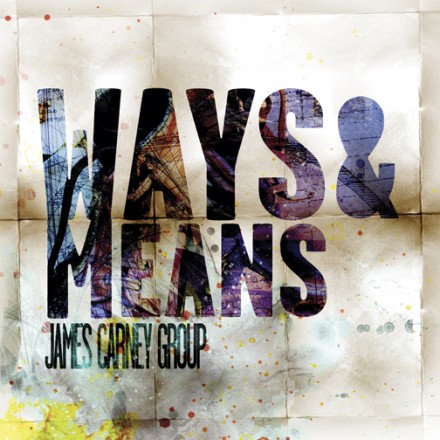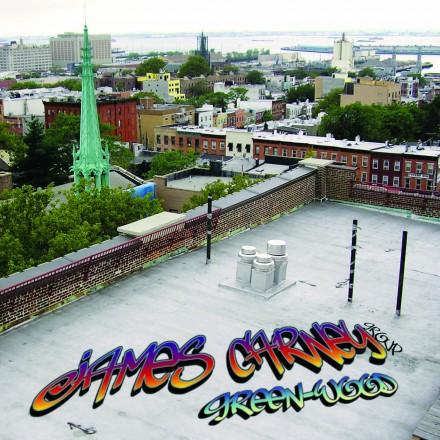James Carney Group
Ways & Means
SGL SA1580-2“…a luminous statement from one of today’s up and coming new composers.”
— Troy Collins, AllAboutJazz.com
Green-Wood, the James Carney Group’s first album, received many accolades for Carney’s distinctive aesthetic – one which, in Troy Collins words, “blends classic modernism with knowing futurism.” In the two years since that record’s release, Carney has further pursued his vision of jazz as virtual cinema. While two of Green-Wood’s compositions were created to accompany the screening of a forgotten silent Hollywood feature, from the outset Ways & Means (a Chamber Music America commission) was designed as a movie in sound:
“Everything was conceived from a cinematic perspective this time, and written sequentially as an album, although I purposely left certain sections open so that we could compose in the moment. I really did think about a 70-minute dramatic narrative film, and how those individual compositions would intertwine, because there is a different sort of approach with film scoring, in that the music should always complement and enhance the onscreen action and emotion. I wanted to create music that could function as the complete score for an edited sequence of images – music that would have themes, sound effects, atmosphere, shock value, drones, periods of time with no established tempo, and dynamic range surprises that are usually a component of scores. And I continually visualized the end result during the process. I didn’t think of a specific story, but I did ponder and focus on abstracted collages of scenes from many films I admired in the past. But in traditional film scoring it’s rare to have the music be jazz-based, or improvisational in nature, and usually when it is, it’s a single or specific type of jazz like bebop or ragtime, big band or cool. And, almost always, the music becomes sliced and diced….When I scored projects in the past, they never featured group improvisation, and they never used all the sonic tools I now have at my disposal. It’s not just blending electronic instruments [an Alesis Andromeda analog synth and a Fender Rhodes] and acoustic instruments in a jazz context – it’s the ability of my band members to coax very unique and sometimes completely unpredictable sounds from their instruments because of their musicianship and their open aesthetic. And most importantly, it’s the blend of all of those sounds, intervals, chords, and their related partials that I wanted to exploit, coming from both the composed passages and the open sections. You can’t plan it, and you really can’t orchestrate it, either.
“I love the challenge of writing a long-form composition, orchestrating it, and then handing off the reins of control to everyone in the group so that we have the chance to go somewhere completely unplanned. That rarely, if ever, happens with music in a dramatic film. And that’s also partly the premise behind the title: that I finally had my own personal ways and means – a unique opportunity, really – to create powerful sonic material by mixing these great improvisers with analog synthesis and traditional keyboards in music that had a film-like character. I also wanted to explore more playing inside the piano, which I did, and it’s the blends that we achieved, and the organic modulations of tempo and texture that I’m particularly excited about. I tried to use the instruments in ways I might not have in the past, for example writing trombone parts above the other horns, or having the trombone play bass parts, while assigning the contrabass arco lines in a higher register than usual.”
Like Green-Wood, Ways & Means explores the border regions of styles and genres, from jazz, rock, and funk to classical and world music: “The differences between approaches, styles, and eras of music are almost meaningless to me, and in fact I see more of a continuum between everything than I ever did before.” Hi-res recording adds definition to the rich textures, while the multi-channel mixes open a new world of musical space.

